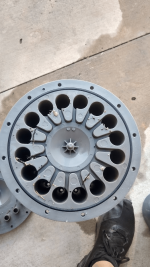reggiehammond
Gold Supporter
- Oct 4, 2020
- 2,253
- Pool Size
- 30000
- Surface
- Plaster
- Chlorine
- Salt Water Generator
- SWG Type
- CircuPool RJ-60 Plus
The OP misread this - setsailsoon was referring to the Pentair DIY warranty penalty for the actual cell. It’s very DIY unfriendly, but as you’ve found out, a Labrador retriever could install these things. It’s not hard.Tex,
This installation looks fine to me. I assume you're planning to have the PB or authorized rep do it for you. If not, and you plan to DIY it make sure you read the fine print on warranty which will mean you don't have one after a very short period of time.
Chris


